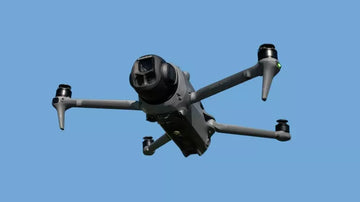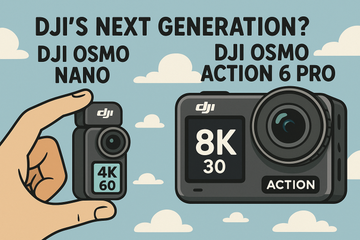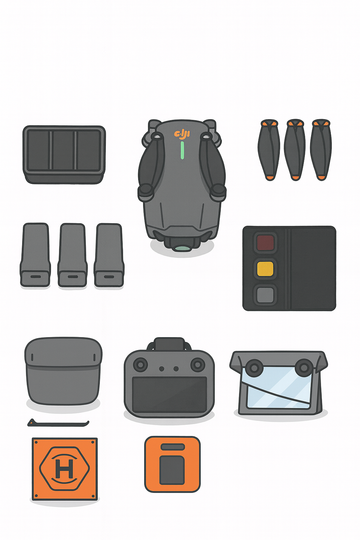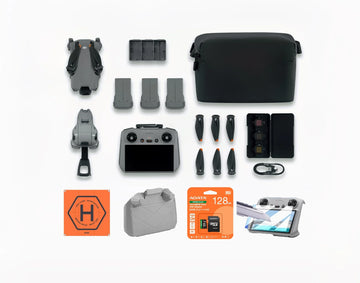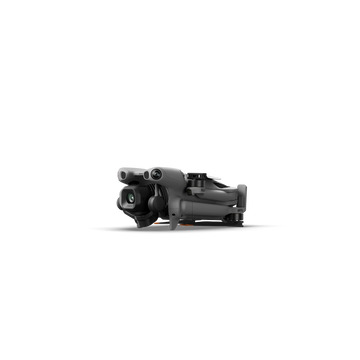Navigating the night sky has always been a challenge for drone pilots. Low light conditions can make it difficult to see obstacles, and traditional vision-based obstacle avoidance systems struggle to perform. With the DJI Mavic 4 Pro, however, a new era of night-time aerial safety and creativity has arrived, thanks to its groundbreaking combination of LiDAR and advanced Nightscape Omnidirectional Obstacle Sensing.
The Problem with Night Flights
Most drone obstacle sensing systems, including those on previous Mavic models, rely on visual sensors (cameras). These sensors work by capturing and processing visual data from the environment. In broad daylight, this is highly effective. However, when light levels drop, these cameras become less reliable, as they can't "see" objects in the dark. This limitation has historically made night flights a risky maneuver for all but the most experienced pilots.
LiDAR: The Future of Obstacle Sensing
The DJI Mavic 4 Pro introduces a forward-facing LiDAR (Light Detection and Ranging) sensor, a technology that has already revolutionized industrial and professional drones. Unlike a camera that needs light to "see," LiDAR uses laser pulses to measure distance. It emits a laser beam and measures the time it takes for the light to reflect off an object and return. This creates a highly accurate, 3D map of the environment, regardless of the lighting conditions.
How LiDAR enhances safety on the Mavic 4 Pro:
-
Beyond the Visible: In near-total darkness (below 0.1 lux), where visual sensors fail, the forward-facing LiDAR can still detect and track obstacles. This means the Mavic 4 Pro can actively brake and avoid objects in environments with minimal light, such as a dimly lit forest or a dark cityscape.
-
Enhanced RTH: The LiDAR also works in tandem with the drone's advanced Return-to-Home (RTH) features. When returning home at night, the drone can use the LiDAR to intelligently navigate and steer clear of tall buildings or other obstacles that would be invisible to traditional sensors.
Advanced Nightscape Omnidirectional Obstacle Sensing
While the LiDAR handles near-darkness, DJI hasn't abandoned its vision-based system. The Mavic 4 Pro's Nightscape Omnidirectional Obstacle Sensing is a significant upgrade to its traditional system, designed to work in low-light conditions (up to 0.1 lux). This system uses six high-performance, low-light fisheye sensors and dual processors to provide a 360-degree, high-resolution view of the environment.
The combined power of LiDAR and Nightscape:
-
Comprehensive Coverage: The Nightscape system handles low-light scenarios where streetlights or other light sources provide just enough illumination for the cameras to work. It allows the drone to navigate through complex urban environments with confidence.
-
A Safety Net in the Dark: If the drone enters a completely dark area where the visual system can no longer function, the forward-facing LiDAR takes over as the primary obstacle detection tool, ensuring safety in the most challenging conditions. This two-pronged approach provides an unparalleled level of flight safety, allowing you to capture stunning night shots and push the boundaries of creative aerial filmmaking.
The Creative Potential
For creators, this means you are no longer limited to daytime flights. You can now confidently capture:
-
Cityscape timelapses as the sun sets and the streetlights illuminate the city.
-
Long-exposure shots of star trails over a mountain range without worrying about a sudden collision.
-
Cinematic tracking shots of a subject in a dimly lit environment.
The Mavic 4 Pro's LiDAR and Nightscape sensing systems are a game-changer, transforming the way we approach night flights and opening up a new world of creative possibilities. This is not just an incremental upgrade; it's a fundamental shift in drone safety and performance.


